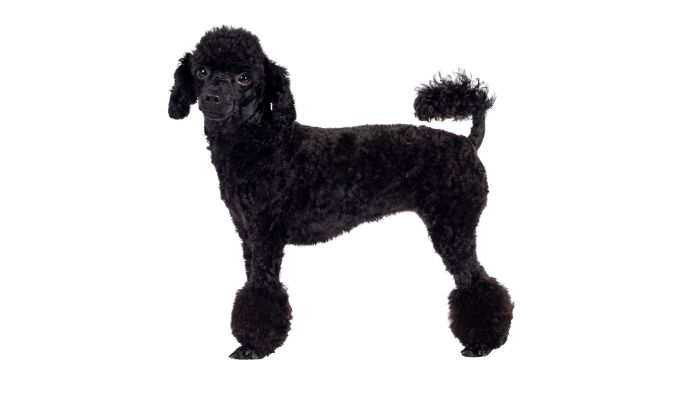
Poodles have been known for their distinctive haircuts since the breed’s creation in the 15th century. This haircut is more than just a fashion statement, though.
It actually serves several practical purposes. Primarily, poodle haircuts are designed to keep the dog’s fur from matting or tangling too easily when they swim or participate in other activities that would otherwise cause their fur to become matted.
Additionally, this haircut can also help keep them cooler in warmer climates and provide extra protection against cold weather by insulating their bodies better.
Furthermore, the hair on the face and feet of a poodle helps protect them from cuts and scrapes if they partake in rough play with other animals or people.
Ultimately, poodle haircuts are designed not only to look stylish but also to help keep these beloved dogs safe and healthy no matter what activity they choose to do.
Why Do Poodles Need Haircuts?
Poodles are one of the most popular dog breeds, and they need haircuts just like humans do. While a poodle’s coat can be left long, many owners choose to have their poodles groomed to keep them looking their best.
Poodles may also need shaved down if they have skin issues that require it. Haircuts help keep the hair from getting matted and matting around the feet.
Grooming is essential for keeping the poodle’s curly mane in check and looking its best. Depending on whether you plan to show your poodle at a dog show or simply want to maintain its appearance at home, a groomer can give your pup a closer cut that will help it look its best.
The American Kennel Club (AKC), an organization that sets rules for kennel club events, has guidelines for how poodles should be groomed for showing purposes.
But even if you don’t plan to show your pup, regular haircuts are important for helping your pup look and feel its best since hair grows quickly in these breeds.
Why are Poodles Shaved? – The History
Poodles are a breed of dog that have been popular for centuries, and the practice of shaving them dates back just as far. The origin of the poodle itself is derived from the German word “Pudel”, which translates to “splash in water”. This was likely due to the breed’s natural ability to be excellent swimmers and retrievers.
In order to make it easier for them to move through water, their long fur was shaved off so they could swim with greater ease. This style of grooming also served a practical purpose – it kept their fur from becoming matted and knotty due to the amount of time they spent swimming in cold water.
It also created a distinct look that has become associated with poodles over time, as well as helping keep them cool during hot days as they were used for hunting or retrieving work. Today, owners still shave their poodles for both practical and aesthetic reasons, keeping up an old tradition that has been around for centuries!
Do Poodles Need Haircuts?
Poodles are a popular breed of dog that comes in many sizes and colors. They are known for their intelligence, loyalty and hypoallergenic coat. As with other breeds, poodles do need haircuts to keep their coats healthy and maintain their beautiful look.
A groomer or an experienced owner can provide a poodle with the right haircut. The coat needs to be trimmed regularly to get rid of tangles and mats, as well as neaten up the overall look of the dog.
It is important to remember that while a poodle’s coat should be kept short, it should not be shaved too close to the skin as this can damage the fur and cause discomfort for your pet.
Regular grooming along with proper nutrition will help keep your poodle looking its best. With regular haircuts and care, you can make sure your beloved poodle looks great all year long!

